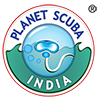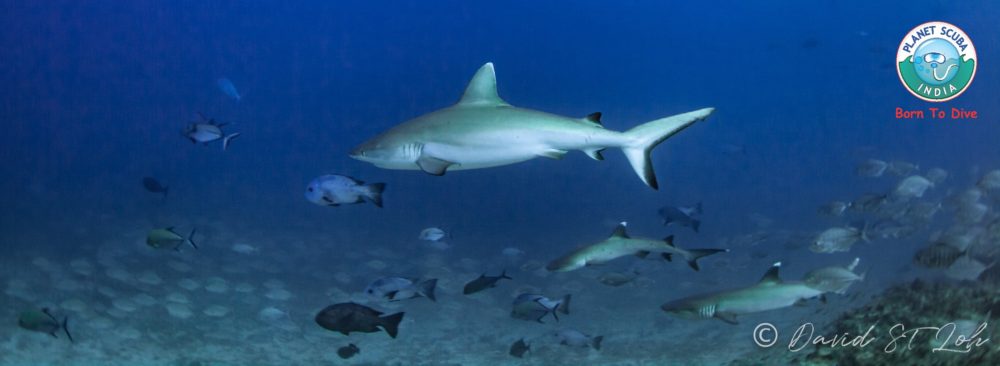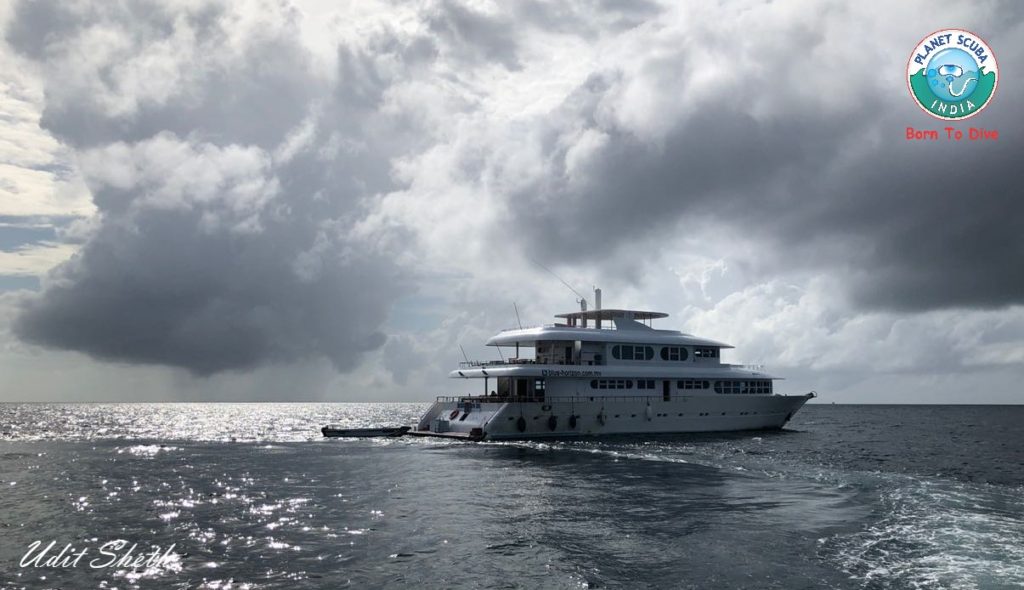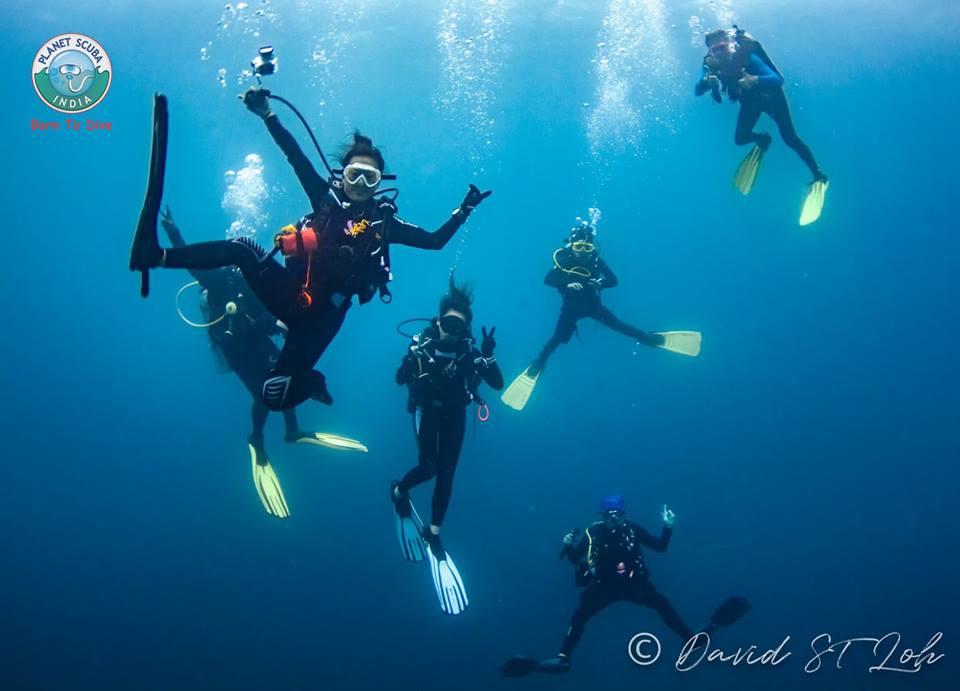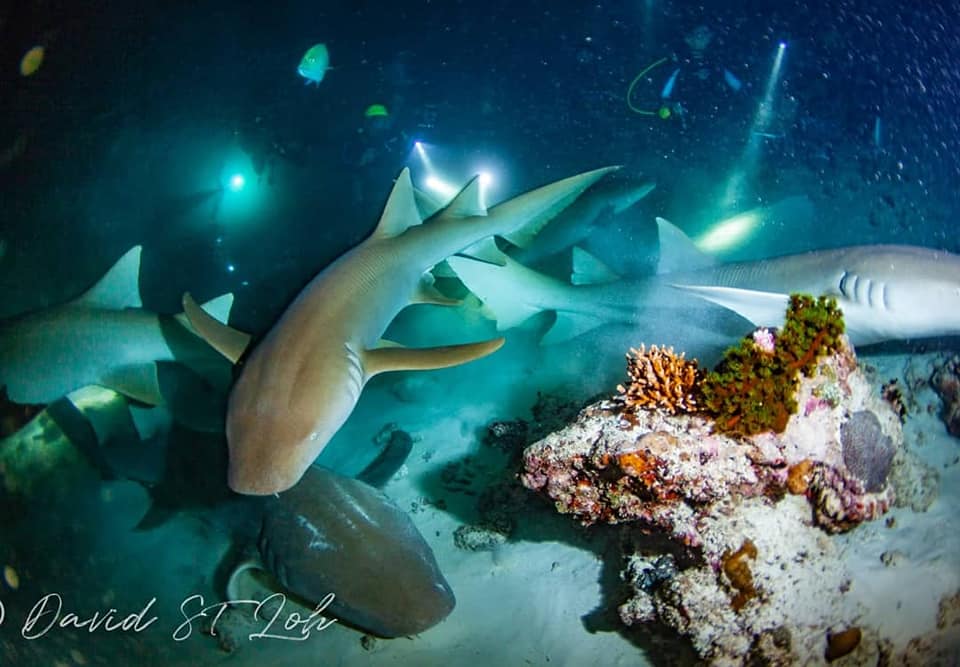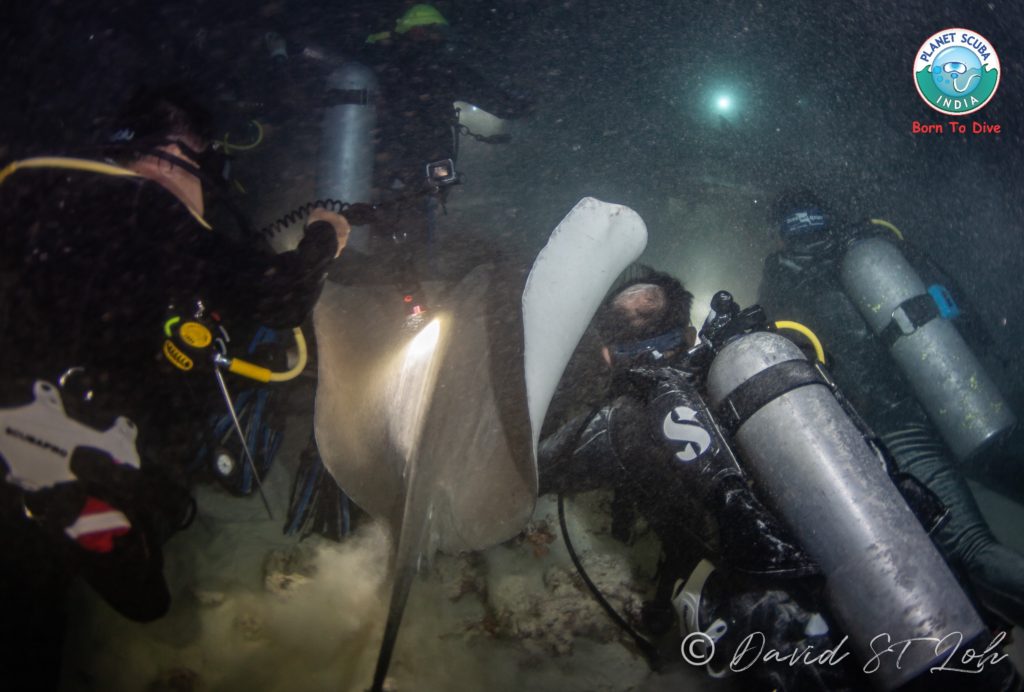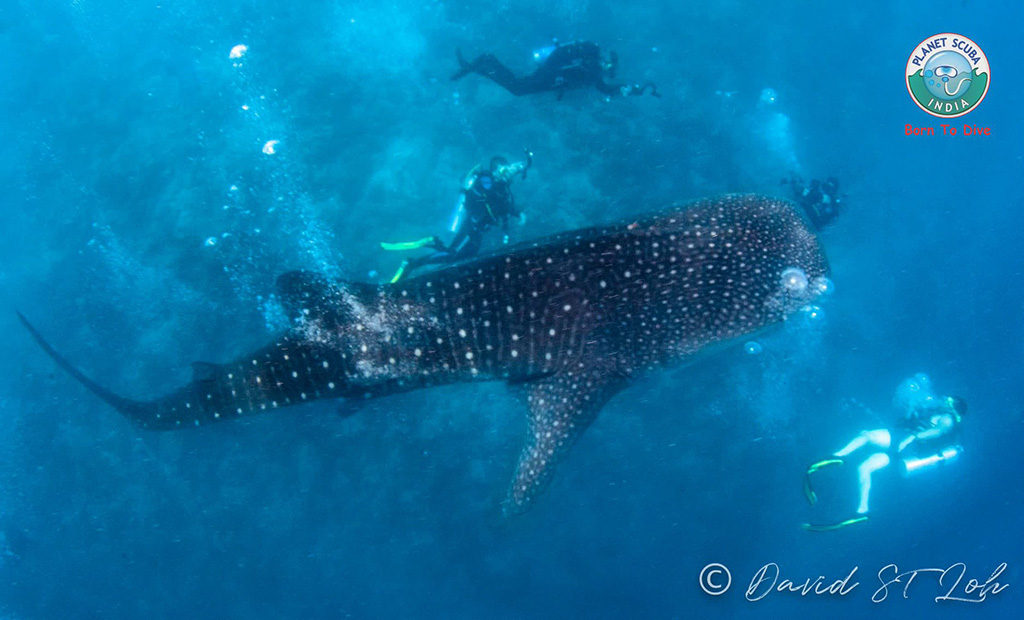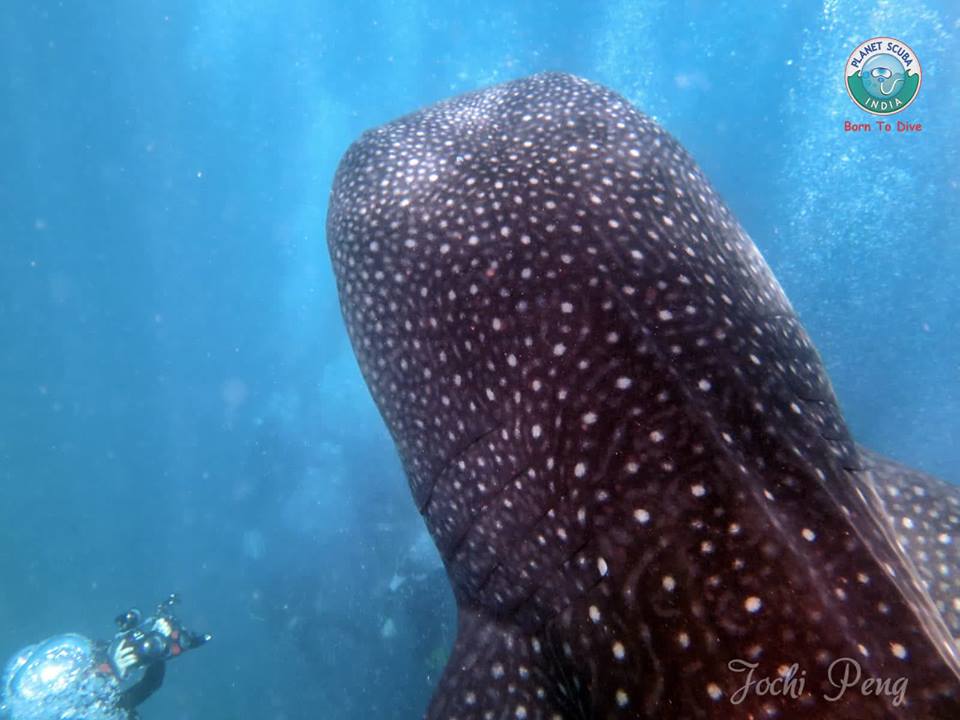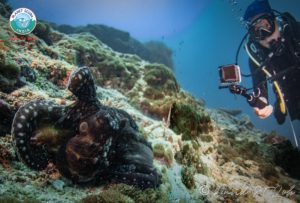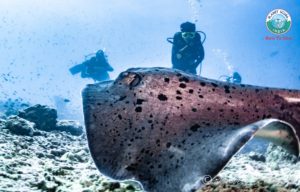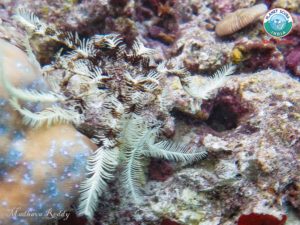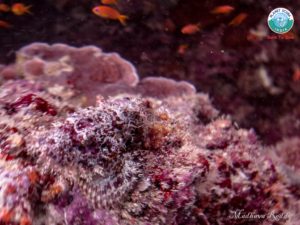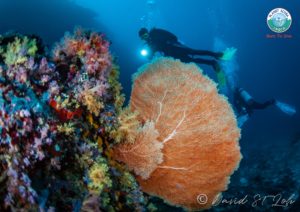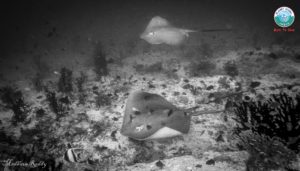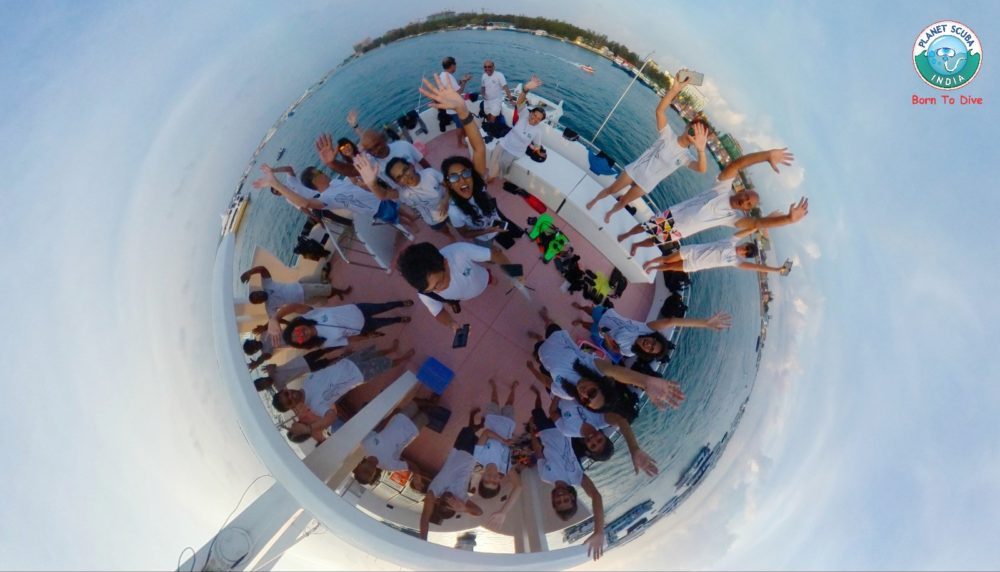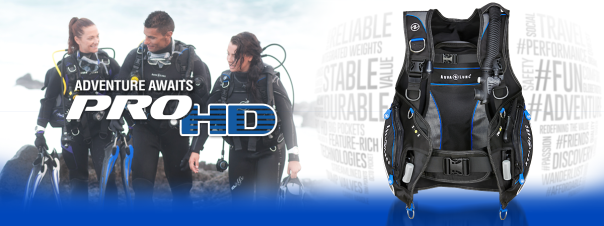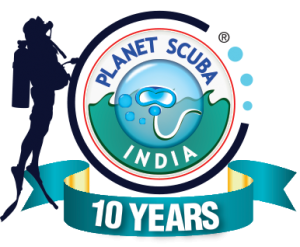 What happens when on the initial day of your scuba diving holiday itself you see manta rays and dozens of white tip and grey reef sharks? Well, the stakes just get higher for the dive guides. But then again, this is the Maldives! The tropical paradise made up of 26 atolls, with some of the best scuba diving sites in the world. And every dive here is simply spectacular.
What happens when on the initial day of your scuba diving holiday itself you see manta rays and dozens of white tip and grey reef sharks? Well, the stakes just get higher for the dive guides. But then again, this is the Maldives! The tropical paradise made up of 26 atolls, with some of the best scuba diving sites in the world. And every dive here is simply spectacular.
Scuba diving holiday in Magical Maldives
For Planet Scuba India, this was our third trip to the Maldives in 2018. And, come to think of it, it seemed like each diving holiday was trying to supersede the previous one. This time around, our liveaboard of choice was the Horizon 3. From October 7-13, this luxury liveaboard was home to 23 guests of different nationalities—Indians, Singaporeans, Taiwanese, Malaysians. Including two divers from India completing their PADI Open Water Diver course. They then went on to complete their PADI Advanced Open Water Diver course, along with three other scuba divers from India.
This diving holiday also had a couple of non-divers (who enjoyed themselves just as much, if not more) and some of the best photographers. You need only take a look at the pictures to nod in agreement.
It was six fun-filled days of eat, sleep and dive! And, of course, swapping of hilarious, unforgettable scuba diving adventures.
Here are some of the highlights of one of our best diving holidays in the Maldives.
The Manta show
First dive of the day at Lankan Manta point. This dive site, at the southeastern outer reef of Lankanfinolhu Island, is one of the most popular cleaning stations for manta rays in North Male Atoll. And, as luck would have it, on the day of our dive, the manta rays showed up in all their magnificent glory. We took a giant stride off the dive dhoni, descended a few meters, and gasped in awe (well, as much as one can gasp with regulator in mouth), as a manta ray elegantly swam past. Not knowing then that this was just a prelude of what was to come a few minutes later. Our dive guide led us to the coral blocks of the cleaning station. And, lo behold, heads swiveled in every direction as mantas glided in, out, and around in circles.
Here’s the thing about cleaning stations: they are a riot of colors. It is not just the mantas vying for attention but brightly hued cleaner fish, vibrant corals, and a motley of sea creatures. There is just so much to take in that you rue the fact that your neck isn’t able to turn more than 90 degrees. Just how are you supposed to see the cuttlefish whooshing past behind your back, when you eyes are so intensely trained on the spectacular subjects in front of you?!
Mantas come calling
Subjects that came to visit us later that night. Bang at dinnertime! Who cares about food when you can watch a manta ray circle around the back of your boat instead. Well, to be fair, it was dinnertime for the mantas too. And one somersaulted away, mouth agape, sieving marine organisms out of the water and into its stomach. Round and round it went, as 23 heads (more if you count the crew) stuck out of the sides of the boat watching in fascination. That is, till it had had its fill and glided away as surreptitiously as it had appeared.
Shark tale
Bathala Maaga Kanthila, North Ari Atoll. Even though this dive site, which we visited right after the underwater manta ray spectacle, had grey reef and white tip sharks. Not to forget, schools of yellowback fusiliers and a huge Napoleon wrasse that stole the show. It was the dive at Fish Head at North Ari Atoll that remains etched in our memory. Perhaps it was the story that did it for us. As our dive guide, Marko, told us during the briefing that at one time this was a famous fishing spot. But when the fishermen reeled in their catch, all they got was the heads of the fish. The sneaky sharks had eaten up the rest. Or perhaps it was the dive site itself. With its multiple ledges and picturesque overhangs replete with fan corals and abundant fish life.
Again, just a few meters and a few minutes into the dive, we spotted sharks right below us. Our dive guide took us on a detour, around one ledge and onto another below it. Having us swim stealthily to not disturb the unfolding drama. Sharks darted around, remoras in tow, while parrotfish hid in crevices in corals. And clownfish peeked out of anemones. Crustaceans moved a centimeter at a time to not be spotted.
It was 45 minutes of spying on sharks. Eyes wide in wonderment; cameras trained at the action. Grey reef sharks and white tip sharks, and also barracudas—all the predators at their A-game. Little wonder then that Fish Head, also known as Shark Point or Mushimasmingili Thila, is listed as one of the most famous dive sites in the world.
Night dive with nurse sharks
We just can’t get enough of sharks. Especially on night dives. Two months later, we were back during this diving holiday too to be bumped into by nurse sharks. Simply put, the dive at Alimatha Jetty, Vaavu Atoll, offers an adrenaline rush like no other. And to think that all you need to do is kneel on a sandy bottom. While nurse sharks, stingrays, travellies whip around you foraging for food. If we had to bet on a species, it would be the crafty travellies, who gulped down the food faster than the nurse sharks and stingrays could wonder: ‘where the heck did it go?’. It was a surreal experience that no amount of photographs or videos could do justice to. Though the ace photographers did manage to capture little snippets of the frenzy.
Back at the boat after the dive, and the nurse sharks came visiting. Who would have thought that after all the action underwater, there would still be so much excitement to see them. Cameras were whipped out. Facebook Lives were posted. Frantic video calls were made to friends to gloat about what they were missing.
Whale shark frenzy
There’s only one thing in the Maldives that can get divers into the water faster than you can blink. And that’s the much-awaited sound of someone screaming: ‘whale shark’! On this diving holiday, we snorkeled to see one just after our dive at Dhigurah Beyru, South Ari Atoll; a dive site that counts whale shark encounters as one of its highlights. It was a mad jumble of divers, cameras and fins, as a lonesome whale shark swam calmly, feeding its way through the waters. Seemingly oblivious to the mayhem unfolding above, for just a glance of it.
The UMS
Colloquially, UMS, or usual Maldivian stuff, is a term used to describe everything from soft corals to giant turtles. That’s because every dive in the Maldives reveals spectacular sights and secrets. Marble rays hunting together. Octopuses, tentacles intertwined, in a sort of a love-hate dance. Mantis shrimp peeking out from its coral den. Scorpionfish in perfect camouflage waiting for its prey. Turtles gorging themselves silly on sponges. Sweetlips hanging out under overhangs. Moray eels getting spruced up by banded coral cleaner shrimps. Shoals of glassfish darting in and out of a wreck. Feather starfish climbing over hard corals. Stingrays swimming in and out of camera range. Schools of bannerfish, yellowback fusiliers, batfish, red snappers just going about their day underwater. And a liveabord full of happy divers. ‘Coz you just couldn’t ask for a better diving holiday destination than the Maldives.
Maldives: A Dream Liveaboard Holiday for Scuba Divers from India
 Scuba diving in India was closed for the season, what with the rains pouring down here. So, it was an obvious choice that we, at Planet Scuba India, plan a diving holiday to the Maldives. A holiday that we will never forget.
Scuba diving in India was closed for the season, what with the rains pouring down here. So, it was an obvious choice that we, at Planet Scuba India, plan a diving holiday to the Maldives. A holiday that we will never forget.Scuba diving in the Maldives
Here there were whale sharks, manta rays, sting rays, octopus, cuttlefish, turtles, sharks, and also, as the locals call it, UMS or ‘usual Maldivian stuff’. A term that shouldn’t be shrugged off lightly, since it includes the entire range of sea creatures, from cute little clown fish to elusive moray eels and pouty Napoleon wrasses. Truly, scuba diving in the Maldives never ceases to fascinate! And it doesn’t matter how many times you have ‘giant-leaped’ into the crystal clear waters.
The fascinating underwater world
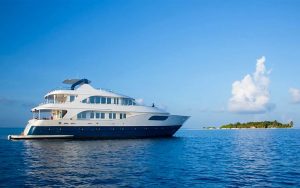
Planet Scuba India’s August 11 – 16, 2018 dive holiday on the Honors Legacy liveaboard was a breathtaking experience. Nineteen scuba divers from India headed to the tranquil waters of Ari Atoll. These included six divers completing their PADI Open Water Diver courses, and four completing their PADI Advanced Open Water Diver courses. Call it beginners’ luck, but dive after dive revealed magical surprises. The hungry whale shark happily feeding its way through the waters off Dhigurah in South Ari Atoll. Majestic manta rays sprucing up at cleaning stations. Cuttlefish getting all territorial about its mate. Turtles languidly swimming past. And then, there was the colorful and varied every day traffic of fish species that had cameras swiveling in every direction, in an underwater photography frenzy.
Night dive at Alimatha
Oh, and the night traffic of nurse sharks, by the dozens, at Alimatha resort house reef, Vaavu Atoll. We saw nurse sharks lazing around, scouring for food in the light of our torches, and scratching their bellies in the sand. While stingrays hovered around trying to grab the limelight. And a hermit crab quietly stole a mollusk shell and trotted away, hoping no one would notice. All the activity made this one of our most exciting night dives in the Maldives.
Scuba divers from India hoist the national flag
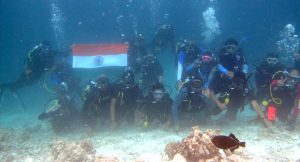
Finally, as it has been every year, on India’s Independence Day, Planet Scuba India hoisted the national flag underwater. The tricolour unfurled against the dramatic underwater landscape of colorful reefs and schools of fish, in the hands of fun scuba divers from India, enjoying their magical diving holiday in the Maldives.
The value of owning your own Scuba equipment
There are many advantages to owning your own dive equipment. Just as in any sport, once you have a personal set of equipment, you tend to use it more often and also get better at what you are doing with it. Familiarity with a personal set of scuba gear means greater comfort and a better dive experience. In a practical sense, being unsure of the quality and fit of the scuba equipment you rent can always be a nagging problem you may have to deal with time and again. It is a sigh of relief if you dive frequently, and having that level of comfort knowing it is your own gear can make a lot of difference to your dive experience. More importantly, it can help you avoid an emergency situation.
Safety if an emergency arises
From a safety perspective, owning your own gear ensures you know how to manipulate it in an emergency – ditching weights for example. Get to know your gear: practice adjusting it and ask your PADI Instructor for recommendations. By consistently diving with the same equipment you’ll learn how things are “supposed” to feel which will also help you dial in scuba skills such as buoyancy.
If you frequently dive with the same buddy, it’s beneficial for both divers to own their own gear. By knowing your buddy’s equipment, you’ll be better prepared to deal with an unexpected problem. Consider an out of air situation: when seconds matter you’ll want to know whether to go for a yellow second stage, or if your buddy will give you his primary while breathing off a secondary located on his inflator. Another common problem is a readjusting a tank that’s slipped; knowing your buddy’s buckles and releases makes this a lot easier to fix in the water.
Not sure which piece of scuba gear to invest in first?
You probably own your own mask, fins and snorkel. If not, it’s a good idea to get these items first as there isn’t one mask that fits all faces, and who wants to use a snorkel that’s been in someone else’s mouth? Once you have the basics, it’s time to move on to the big stuff: BCD, dive computer, regulator, etc. Of these, the most practical and essential would be the dive computer, as it becomes more essential once you begin to dive regularly. The level of accuracy provided by the dive computer with regards to depths, water temperatures and more importantly the decompression limits definitely makes you enjoy your every dive and keeps you wanting more.
Original article: Sourced from blog @ PADI.com
Aqua Lung Pro HD BCD – A review by Dive India
By Vandit Kalia, Dive India Scuba & Resorts, Havelock Island
The Aqualung Pro HD BCD is a personal favorite of mine. I owned the previous version of this (Seaquest Pro HD, before they were re-branded) for several years and found it an extremely comfortable jacket-style BCD.
The air pockets have some structure to them, so the air bubbles doesnt move all over the place (as in some other BCDs) and robust tank support and structure in the back means that the tank stays firmly put, without rolling from side to side.
This BCD has integrated weights and one feature i consider near-essental – trim pockets. These are weight pockets located around your shoulders: by storing 1-2 kg there, you can move the center of your buoyancy higher up, which allows you to get a better, neutral trim (in other words, you can hold any body position you want – horizontal or inclined – without any issues).
 This system of distributed weights (2 integrated weight pockets and 2 trim pockets) gives you more ditch options: if you are diving in cold water where you need to plan for the contingency of dropping weights, this gives you more options as compared to a weight belt (which is all or nothing).
This system of distributed weights (2 integrated weight pockets and 2 trim pockets) gives you more ditch options: if you are diving in cold water where you need to plan for the contingency of dropping weights, this gives you more options as compared to a weight belt (which is all or nothing).
The Aqualung Pro HD BCD uses a high-denier fabric, which is more robust, more abrasion-proof and less likely to fade or look raggedy over time. Lastly, the BCD comes with more than enough lift to handle cold water diving as well (13kg of lift for a size M).
And it has more than enough D-rings and attachment points to hold all your accessories. As I mentioned earlier, I used to own this many, many years ago and sold it because i was diving with a tech harness only. In terms of price/performance, this is probably one of the best BCDs in the market today, period.
For more information on Aqua Lung Pro HD BCD, please contact us.
Mining to blame for islands to sink beneath waves
Two small islands in South Asia’s first marine biosphere reserve have sunk into the sea primarily as a result of coral reef mining, experts say.
The islets were in a group in the Gulf of Mannar, between India and Sri Lanka.
The Indo-Pacific region is considered to contain some of the world’s richest marine biological resources.
The group’s 21 islands and islets are protected as part of the Gulf of Mannar Marine National Park, covering an area of nearly 560 sq km (216 sq miles).
Fishermen had indiscriminately and illegally mined invaluable coral reefs around the islets of Poomarichan and Villanguchalli for many decades, said S Balaji, chief conservator of forests and wildlife for that region of Tamil Nadu state.
“The absence of any regulations prior to 2002 led to illegal mining of the coral reefs, which came to an end when environmental protection laws were enacted,” he told the BBC Tamil Service.
Mr Balaji said rising sea level as a result of global warming was also a factor behind the islands’ submergence.
But this was questioned by Simon Holgate from the Proudman Oceanographic Laboratory in Liverpool, UK, who said observations showed that the sea level in the region had been rising slower than the global average.
“I think that global sea level rise had little impact on the disappearance of these islands and it must be due to other reasons, possibly the mining of coral reefs,” Dr Holgate told BBC News.
Though these islets were only 3-5m (10-15 ft) above sea level, their submergence sounded an alarm bell about the danger many more small islands faced in the long run, according to Mr Balaji, who is also director of the Gulf of Mannar Biosphere Reserve Trust (GOMBRT).
The Gulf of Mannar was chosen as a biosphere reserve by the Indian government in 1989 because of its biological and ecological uniqueness, and the distinctive socio-economic and cultural profile shaped by its geography.
Most of the 21 islands are uninhabited, and the corals were mined for use as a binding material in the construction industry, as they were rich in calcium carbonate.
Rich biodiversity
The biosphere reserve is a storehouse of about 3,600 species of marine flora and fauna.
Many more wait to be studied, said Deepak Samuel, marine biologist and project associate with the Energy and Environment Unit of the UN Development Programme (UNDP). 
“The Gulf of Mannar is a unique reserve with ecosystems like coral reefs, mangroves and seagrass,” Mr Samuel said.
“It is a nursery for shell and fin fishes, which means the entire breeding and juvenile raising takes places in these three ecosystems.”
More than 300,000 fishermen depend on the Gulf of Mannar for their livelihood. It is also the dwelling place for many endemic species, notably the dugong or “sea cow”.
Studies have proved that this gulf is home to 117 species of corals belonging to 37 genera, and 13 out of the 14 species of seagrasses in Indian seas.
The area has also been famous for pearl harvesting for over 2,000 years.
According to marine biologists, a quarter of the 2,000-plus fin fish species in Indian waters are in this gulf, making it one of the region’s most diverse fish habitats.
